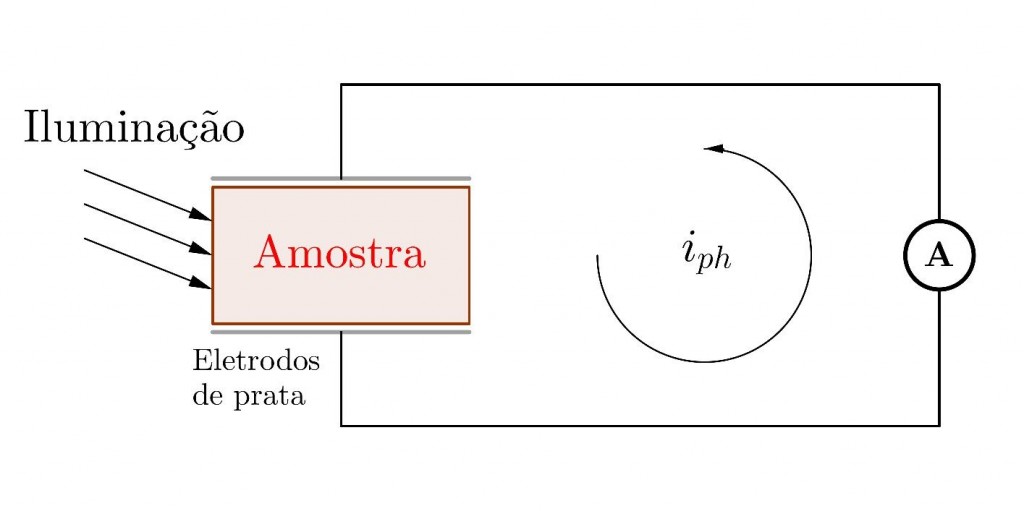[Paper: Photovoltaic effect in Bi2TeO5 photorefractive Crystal. Ivan de Oliveira, Danilo Augusto Capovilla, Jesiel F. Carvalho, Renata Montenegro, Zanine V. Fabris and Jaime Frejlich. Appl. Phys. Lett. 107, 151905 (2015). DOI: 10.1063/1.4933097.]
New member of the family of photovoltaic materials
The photovoltaic effect consists in the generation of direct electrical current in a material, in consequence of its exposure to light, in the absence of an applied electric field.
In an article recently published in Applied Physics Letters, a Brazilian team of scientists presented striking experimental evidences of the presence of photovoltaic effect in bismuth telluride (Bi2TeO5) crystals. Until the publication of the paper, the material was known, for example, for being photorefractive (its reafractive index is altered in consequence of its exposure to light), but there was no evidence of its photovoltaic nature.
“The greatest contribution of this article lays in the fact that we showed for the first time that the Bi2TeO5 crystals exhibit the photovoltaic effect”, highlights Ivan de Oliveira, Professor of Faculty of Technology (FT) at State University of Campinas (UNICAMP) and author of the said article.
The published work was performed at the Optics Laboratory at FT – Unicamp, in the city of Limeira (SP), in collaboration with the Physics of Materials Group of the Federal University of Goiás e with the Optics Laboratory of the Institute of Physics “Gleb Wataghin” at UNICAMP. The collaborators gathered their experience in manufacture and characterization, respectively, of photorefractive crystals.
The study that originated the article is part of the master’s degree research of Danilo Augusto Capovilla, under the guidance of Professor Oliveira, in which some results indicated that the Bi2TeO5 crystals might exhibit photovoltaic effects. “Upon such indications, we performed several experiments and managed, using direct and indirect measures, to show that the Bi2TeO5 crystals in fact present the photovoltaic effect”, says professor Oliveira. “The demonstration of the effect was performed using non-holographic techniques and, mainly, stabilized holographic record techniques”, he completes.
One of the experiments conducted consisted in measuring the photovoltaic current of the non-doped bismuth tellurite sample and, for comparison, of a material in which the photovoltaic effect is already known, the iron-doped lithium niobate.

In addition to leave some questions which answers might be searched in new researches, such as the origin of the photovoltaic effect in the studied crystal, the article creates possible applications to bismuth telluride in light conversion into electricity, information storage and manufacture of optical components.

